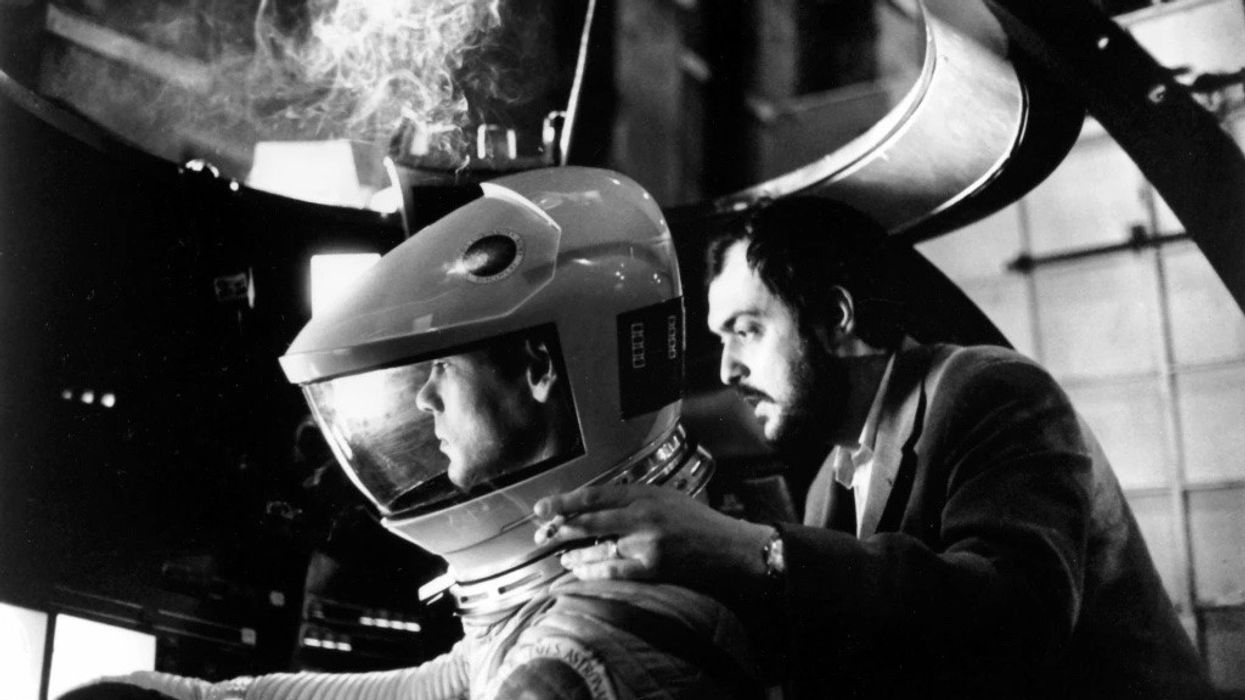This Is Why Stanley Kubrick Did 30 or More Takes for Every Scene
Is there a method behind director Stanley Kubrick's madness?

There was a rumor spread around the industry that Stanley Kubrick was a perfectionist. If you were to ask Kubrick if he thought he was a perfectionist, he would probably scoff while rejecting that label.
It wasn’t perfection that Kubrick was looking for in the endless takes he would shoot for a single scene. It was just his method as a director. We’ve heard of directors who do take after take to get the right performance out of an actor, and that’s essentially what Kubrick’s methods were.
Although his notorious habit was unconventional and torturous to some actors, with the number reaching 127 takes in The Shining, Kubrick had a reason behind his madness. CinemaTyler breaks down Kubrick’s method of 30 takes per scene, and why his method always got some of the best performances in cinema. Let's get into what this method can teach us about directing actors.
The Reason Behind All Those Takes
There was never any concrete idealized version of how Kubrick wanted things done in his film. By his admission, Kubrick rarely knew what he wanted, but he knew exactly what he didn’t want.
Aside from some specific shots or on-set technical problems, Kubrick usually wouldn’t go much further than 30 takes for a scene, but it depended heavily on the actor and their performance.
In an interview with Rolling Stone, Kubrick said, “You cannot act without knowing dialogue. If actors have to think about the words, they can’t work on the emotion. So you end up doing 30 takes of something and still you can see the concentration in their eyes; they don’t know their lines. So you just shoot it and shoot it and hope you can get something out of it in pieces.”
Many actors don’t learn their lines until the day they are supposed to deliver those lines because they like line delivery fresh and natural. Of course, actors are familiar with the script and have developed their character for the story, but Kubrick wanted the actors to know their lines like it was the only words they have ever known.

Full Metal Jacket co-writer Michael Herr said that some of the younger, less experienced actors that worked with Kubrick only had a rudimentary sense of what Kubrick meant by “knowing your lines,” and this would create a massive learning curve for the actors who had to repeat scenes over and over again. Kubrick wanted the lines to lead the actors through the scenes, which is something many actors struggle with.
Kubrick’s many takes also were a result of him finding what he wanted to get from a scene. Although he had a vague idea of what he wanted, Kubrick found that each take would help flesh out the quality of the story, camerawork, and the actors’ performances.
While Kubrick was determined to find what he wanted to say in his story, he wasn’t a director who thought he knew what was best. Instead, he wanted collaboration between his cast and crew to find what makes the scene work. Kubrick encouraged the actors to develop their performances without making choices, but he never explicitly stated what he wanted because he did not feel that he knew how to shape an actor’s or a crew member’s craft.
Doing multiple takes was not Kubrick’s way of being a cruel director who was obsessed with the “perfect shot.” Instead, he wanted to build a theme or idea that could mature and develop into something extraordinary that wouldn’t have existed in the first few shots.

Directors can get a lot from their actors that they were not willing to give away right at the beginning by shooting a scene multiple times. It can be frustrating for an actor to do take after take with little to no direction, but it’s about finding that feeling or energy that works in the sense naturally.
If a scene isn’t working in your project, don’t be afraid to try multiple takes until it feels right to you. There is a strong chance that you will get the performance that delivers that specific energy you want for your story and highlights the acting chops of your cast. Remember that you are going to eat up a lot of shooting time when doing multiple takes, so make sure to allot time in the schedule for this method of directing.
What do you think of Kubrick’s method of filmmaking? Let us know in the comments!
Source: CinemaTyler











